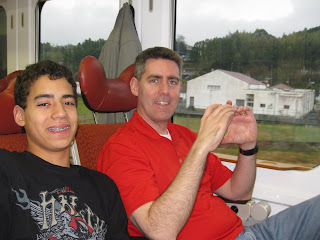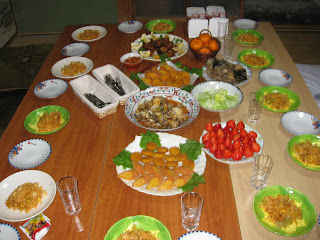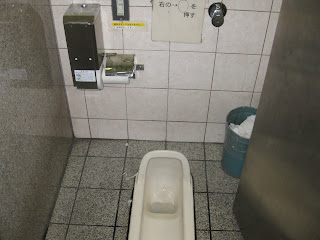Avaliable only to foreign travellers visiting Japan.You must have "temporary visitor" visa under the status of Japanese immigration law. Rail passes are not avaliable for people travelling on working holiday or student visas. The JR pass (All) must be purchased before you arrive in Japan. It is not sold in Japan.
Each of the five different passes cover different areas of Japan. Sonic express trains take approximately two hours to and from Hakata Station.


We were able to see the family's display of antique dolls for girls day... so, so cute!!!!
The Hina Matsuri or doll festival takes place on March 3rd every year. Its origins go back to China which had the custom of making a doll for the transferral of bad luck and impurities from the person, and then putting the doll in a river and forever ridding oneself of them. March 3rd celebrates Girls' Day in Japan, and from mid to late February families with daughters put out the dolls with the hopes their daughters will grow up healthy and happy. One superstition associated with this is that if they are late in putting away the dolls when the festival is over, their daughters will become old maids. Most displays consist of just a prince, (Odairi-sama) and a princess (Ohina-sama), but more elaborate displays include the dolls being part of a 5 or 7 tier diplay (hinadan), along with courtiers, candy, rice boiled with red beans (osekihan), white sake (shirozake), peach blossoms, diamond shaped rice cake (hishimochi), toys, and tiny furniture. Traditionally many parents or grandparents will begin their first display for their daughter, called hatsu zekku, when she is just a year old, but some families have passed their dolls down from generation to generation with the bride carrying her dolls with her to her new home. Aside from the displays, Japanese used to go view the peach blossoms coming out, drink sake with a blossom in it, and bathe in water with the blossoms. The blossoms represent desirable feminine qualities, including serenity, gentility, and equanimity.
The festival evolved into the form we can see today during the Edo Period (1603-1867), and it is still possible for people to buy Hina Matsuri dolls created during that time as well as the late 19th and early 20th centuries in antique shops during the season. Two areas that come alive with such displays and events like those above is Yoshimura and Yanagawa, both in Fukuoka Prefecture.
The festival evolved into the form we can see today during the Edo Period (1603-1867), and it is still possible for people to buy Hina Matsuri dolls created during that time as well as the late 19th and early 20th centuries in antique shops during the season. Two areas that come alive with such displays and events like those above is Yoshimura and Yanagawa, both in Fukuoka Prefecture.
Natsumi’s aunt and family welcomed us with an amazing dinner!!!!
After a long day of Traveling it was time to go to bed, soooooo…….. After folding the tables and moving the pillows the dining room became our bedroom.

Once again we were treated to an amazing banquet for breakfast with pastries and local fruits……hummmmmmmmm so good!!!!
Guess what!!!!!!!! Time to eat again……AMAZING LUNCH!!!!!!!!!!!
We even got to see my friend’s cousin's Kimono, she just had her birthday and is officially an "adult", we got to see all of her pictures and it sure was an amazing celebration!!!! It is a beautiful kimono.
Seijin No Hi is the first holiday of the year after New Year's is all over. It is for all the women who have just become legal adults (age 20), and most families buy a kimono for their daughter. The typical kimono is 300-400 thousand yen, but much more extravagant kimono can be even as high as a million yen each. On the day the young lady will typically go to a nearby Shinto Shrine and pray for health, success, money, etc. It's one of the few times you will see anyone wear a kimono -- except for the grannies running around going to study or teach tea ceremony. The other occasions are graduation from a college, and once in a while at a wedding.
Seijin No Hi is the first holiday of the year after New Year's is all over. It is for all the women who have just become legal adults (age 20), and most families buy a kimono for their daughter. The typical kimono is 300-400 thousand yen, but much more extravagant kimono can be even as high as a million yen each. On the day the young lady will typically go to a nearby Shinto Shrine and pray for health, success, money, etc. It's one of the few times you will see anyone wear a kimono -- except for the grannies running around going to study or teach tea ceremony. The other occasions are graduation from a college, and once in a while at a wedding.

And more friends!!!!!!!!!!

The view of the cherry blossoms in the hills surrounding the village…So beautiful!!!


















































